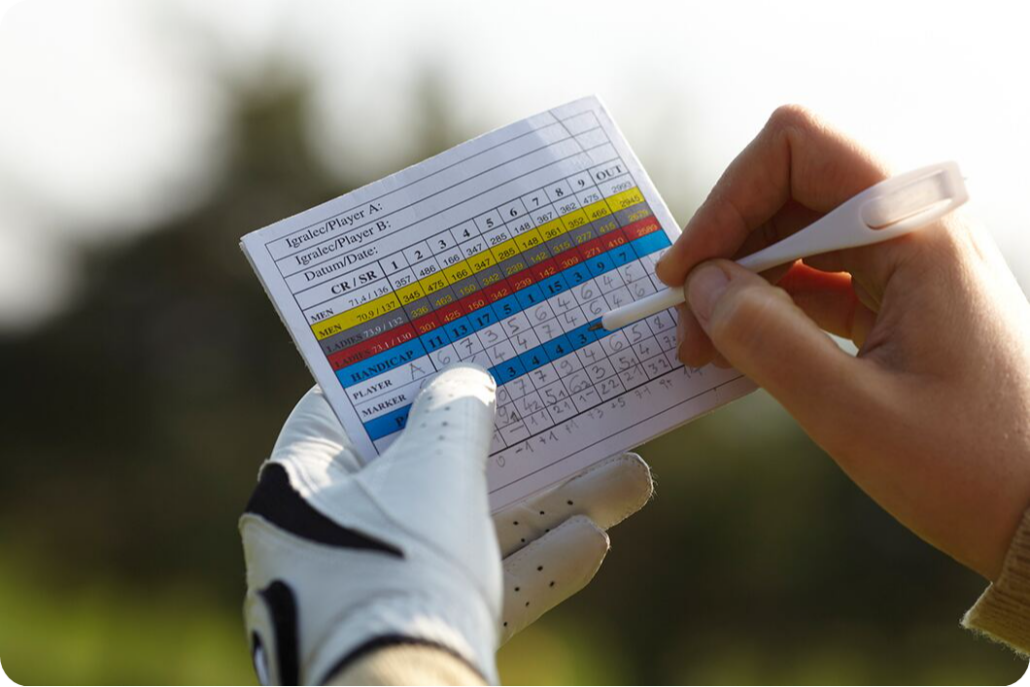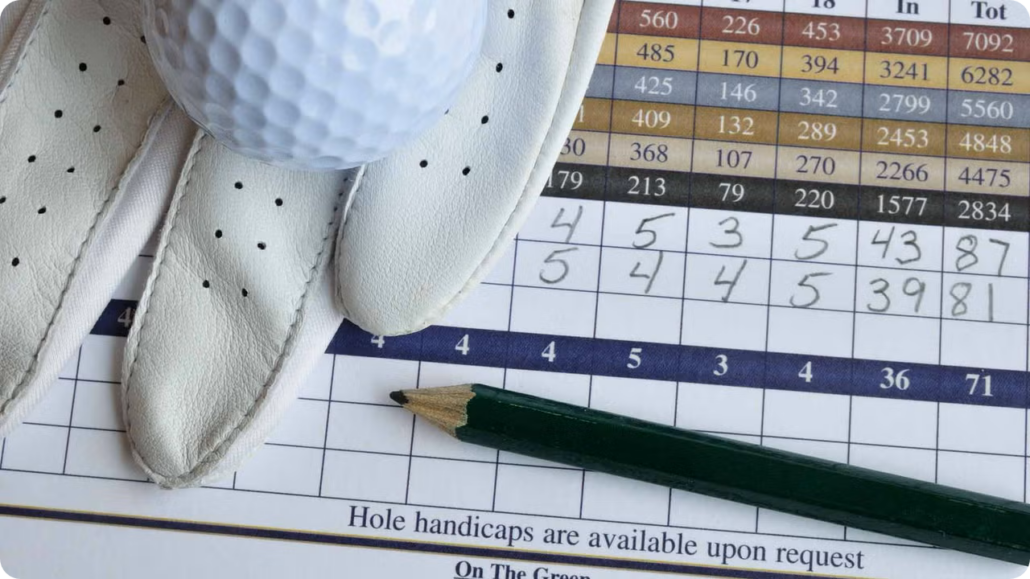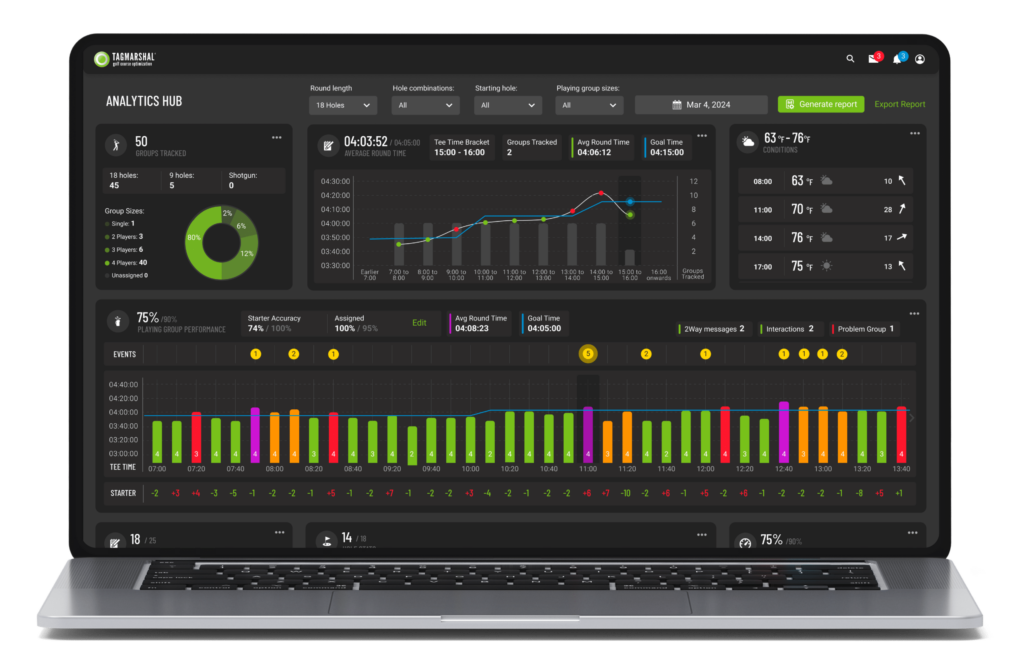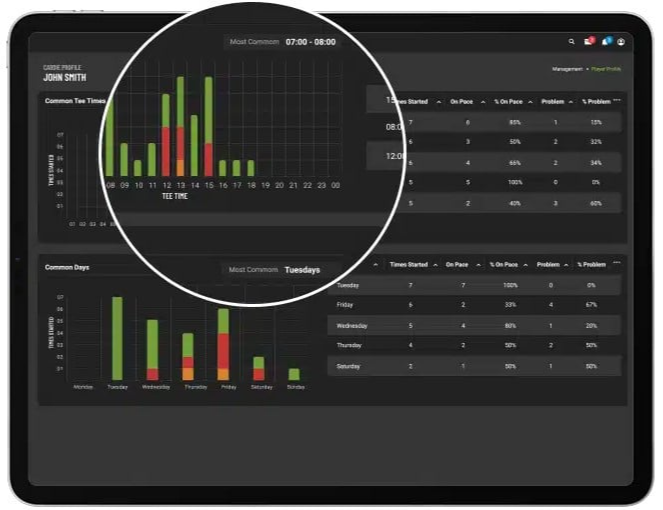Golf Cart GPS Systems: Understanding Golf Handicaps – What They Are And How To Calculate Yours
Whether you’re a golfing stalwart or brand new to the game, the modern handicap system can be confusing if you don’t know the nuances of the way it’s calculated. In 2020, a new golfing handicap system was introduced globally to standardize the game worldwide. This system is known as the World Handicap System, or WHS, and was introduced to enhance the enjoyment of the game across players of all skill levels while keeping the gameplay fair for everyone.
The WHS unified the six different handicap systems that were previously used in different areas of the world to create one universal system that every golfing body and its players now utilize. The new handicapping system makes use of a Handicap Index for the player’s ability, while a Course Handicap is granted to every course to rate and measure its difficulty.
The goal with this is to promote consistency and adaptability, enabling golfers to measure themselves against any golfer accurately, as well as having a fairer system in place overall. To achieve this, key new features were initially implemented in the calculations, with some crucial revisions made recently.
In this article, we take a look at what a handicap is, how it’s calculated, and how it benefits and grows the game comprehensively. We’ll also briefly review the role that operational intelligence platforms and golf cart GPS systems like Tagmarshal play.
What Is The Handicap System?

The goal of a handicap system in golf is ultimately to level the playing field for everyone. Whether you’re new to the game or have mastered your swing, handicaps enable both types of players, and everyone else in between, to compete against each other fairly, while not compromising on the game’s enjoyment. This means that a complete beginner can quite literally compete with a seasoned professional – and still have a chance at coming out as the winner.
While extremely enjoyable to play, at least for those who see themselves as ‘golfers’, there is no denying that golf can be difficult. The learning curve of golf is steep and, for some people, it takes a considerable amount of time, effort, and practice to go from swinging their first club to getting on the course and actually playing a round. Nevertheless, the golfing industry relies on and needs to encourage newcomers to join, and therefore grow the game.
To understand how the World Handicap System works, you need to know what a Handicap Index is, and perhaps more importantly, understand why it exists in the first place. Simply put, the index is a numerical value that measures a player’s demonstrated ability to play the game. At its core, it isn’t that different from any traditional handicap system that came before it, though the way a handicap is determined within the WHS differs quite substantially.
The WHS ensures that every golfer, regardless of location or experience level, is evaluated by the same standards. With this level of global consistency, competitiveness is enhanced, and golfers are encouraged to keep improving.
Golf Cart GPS Systems And How Handicaps Are Calculated
It’s important to note that the World Handicap System was designed to measure a player’s potential ability. To achieve this as accurately and fairly as possible, the WHS incorporates numerous factors, such as a Handicap Index, Course Rating, Slope Rating, and various other elements to calculate handicaps. Although independent, all of these factors work together to establish a player’s handicap. Three main criteria establish a handicap; namely, Handicap Index, Course Rating, and the Slope Rating.

First and foremost, the Handicap Index is the numerical value that is placed on any player’s ability to play the game. A player’s index is calculated with a special formula, based on the best eight score differentials of their last 20 rounds, though an index can be calculated from fewer rounds as well if and when needed.
The Course Rating is the assessment of the playing difficulty of a particular course for a scratch golfer, under standard course and weather conditions. Since no two courses are the same, their difficulty cannot be, either – something the majority of previous handicap systems did not account for.
The Slope Rating, on the other hand, is the relative measurement of how much more difficult the course is for a higher-handicap golfer, compared to a scratch golfer. You can ask the course for the Slope Rating.
To calculate a course handicap, you would apply the following formula: Handicap Index x (Slope Rating/113) + (Course Rating – Par). Modern-day golf cart GPS systems make calculating handicaps easier overall.
How Are Handicaps Applied?

When all of these metrics have been established, a course handicap can be allocated to any player for that course, based on the selected tees. With the WHS, any player is permitted to play from any tees of their choosing, and an appropriate handicap for the player and the course difficulty is calculated by considering all the variables. This is done automatically “beforehand”, either within various mobile applications, or with an on-course chart that should be readily available.
This means that it’s highly likely that players would play off different handicaps on different courses, even when the par of the course and their index remain the same. For instance, if a player with a Handicap Index of 14 plays on a course with a higher Course Rating and/or Slope Rating, their course handicap may increase from 14 to 15, 16, or even 17. If the Course Rating and/or Slope Rating is lower, and thereby deemed easier, the same 14 handicapper would see their handicap drop.
With the above dynamic adjustment in place, the playing field is kept even across the board, no matter where a round is played. The system accounts for more than just scoring ability. It also accounts for the challenges of each course, such as narrow fairways or rough greens. Golfers who prefer playing on a range of different courses find this especially valuable.
Eliminating a one-size-fits-all approach also discourages handicap manipulation. Applying handicaps in this way drives fair competition and rewards consistent improvement. Golfers get a true reflection of their ability.
How To Keep Your Handicap Updated

Keeping your handicap updated is essential for fair play as well as accurately keeping track of your progress as a golfer. It’s important that scores are captured after every round so that an honest representation of your handicap is obtained. Fortunately, it’s easier than ever to submit scores after play, thanks to recognized golf apps like golf cart GPS systems, websites, or digital stations at golf clubs.
There is no extra obligation on the golfer’s part – once a post-round score is submitted, the differential calculations (best 8 of the last 20 rounds) are automatically done for you. The WHS even allows for nine-hole scores to be submitted and counted towards the calculation of a player’s index – something that was not attainable with all of the previous versions of handicap systems.
The streamlined process means it’s easy to maintain an accurate handicap while also encouraging more consistent participation in the game. Golfers who regularly update scores ensure that the handicap is a true reflection of their existing ability. With modern-day golf technology, such as golf cart GPS systems, doing the bulk of the work, golfers can focus solely on enjoying the sport and playing their best game.
How Tagmarshal Can Promote Handicap-Driven Course Intelligence

Tagmarshal is a powerful operational intelligence platform designed to improve course operations as a whole through pace of play management, golf cart GPS systems, two-way communication systems, and AI-driven data. We should consider the role that technology plays in handicaps and performance analytics. Tagmarshal can help players with accurate yardage on the 2Way screens, which ultimately helps make decisions around shots.
Players can use the data being offered by Tagmarshal to determine areas for improvement and work towards getting the most out of their game. While Tagmarshal is an operational intelligence platform and is not necessarily geared towards lowering handicaps, the data on hand can give players some insight into what they need to focus on going forward.
Today, golf cart GPS systems have evolved to be more than just convenient tools for measuring distance and navigating through a course. Golf cart GPS systems can be used by players to improve their game. Golfers can use the data to get valuable data and post-round analytics, from which they can determine how to play different holes, manage distances, and make decisions under pressure.
Players can use metrics such as shot distance, location, score, club selection, and pace of play to build a performance history. By reviewing the performance history, players can figure out weaknesses. As time goes on, players can use this data to make smart decisions on the course, ultimately becoming better golfers in the process.

As Tagmarshal can greatly improve course operations, players can enjoy a smooth, distraction-free game. This means players can focus entirely on improving their game instead of concerning themselves with potential issues like long delays. Our platform also means you can automatically submit scores after every round to maintain an accurate Handicap Index.
Tagmarshal gives course owners the tools and intelligence to improve their entire operation, which makes things easier for everyone involved, from staff members on the course to the players themselves.
We can see how golf cart GPS systems technology can be used to bridge the gap between casual play and competitive improvement. The power of data should not be underestimated, and using said data as a feedback loop can help players set goals and adjust strategies to improve.
Final Thoughts On Handicaps
No matter where you are based and how experienced you are, golf handicaps are no longer just for serious tournament players and professionals. Today, it is a key part of the sport for everyone, and it even helps level the playing field and improve competitiveness. The introduction of the World Handicap System and the integration of modern-day technology enhancements like golf cart GPS systems means players have incredible tools at their disposal.
Golfers can track their performances and use data and performance metrics to improve their game overall. The handicap process has become ever more relevant, accessible, and accurate, representing another jump in golf intelligence. Now, for both the scratch golfer and serious professional, knowing how handicaps work is an important part of being a golfer.
Tagmarshal is the industry leader in golf court optimization. We provide courses with full, real-time operational oversight and reporting, giving golf operators everything they need to boost the player experience. To learn more about our powerful operational intelligence platform or to book a demo today, feel free to reach out.
 WATCH DEMO
WATCH DEMO